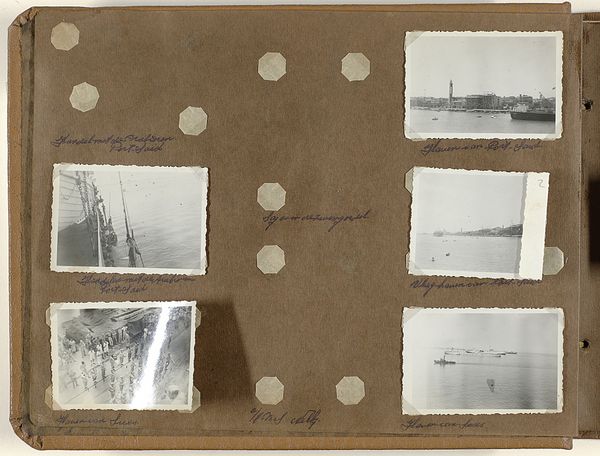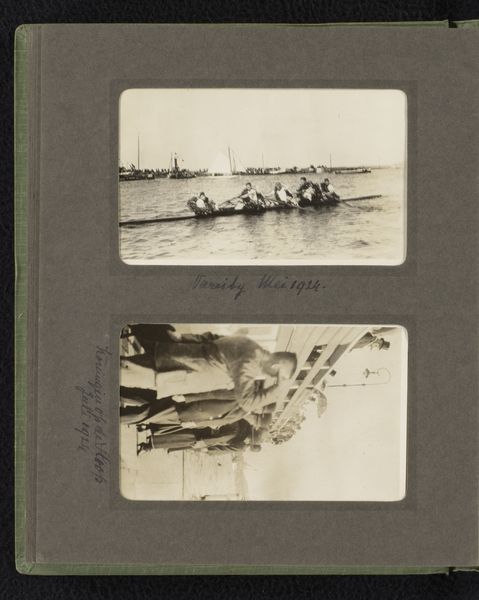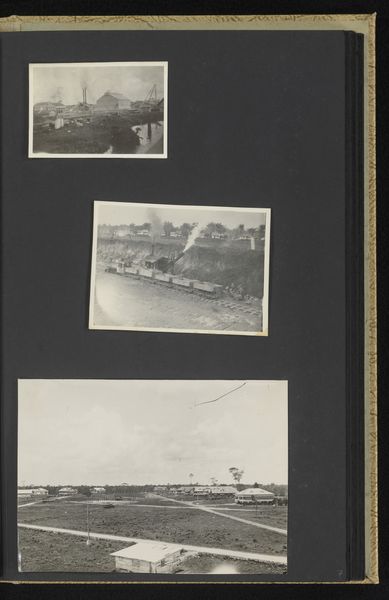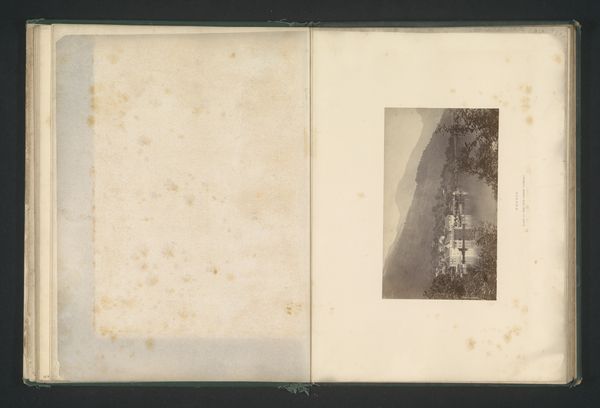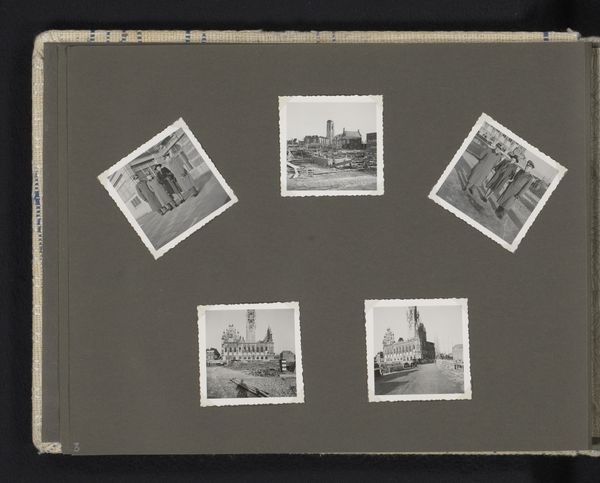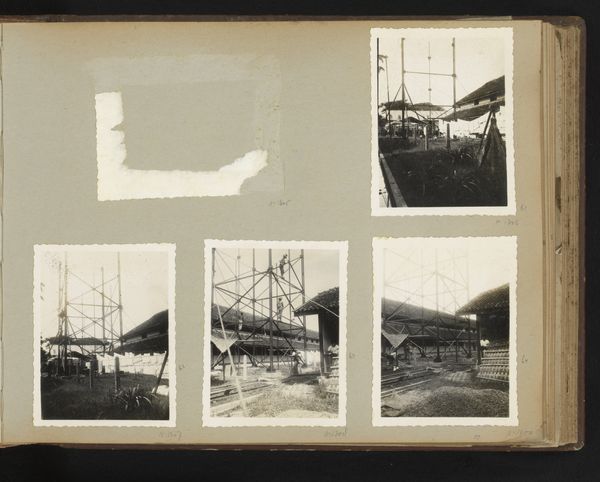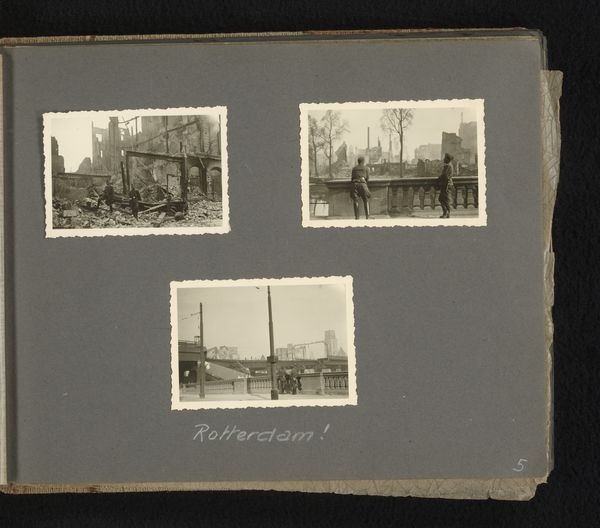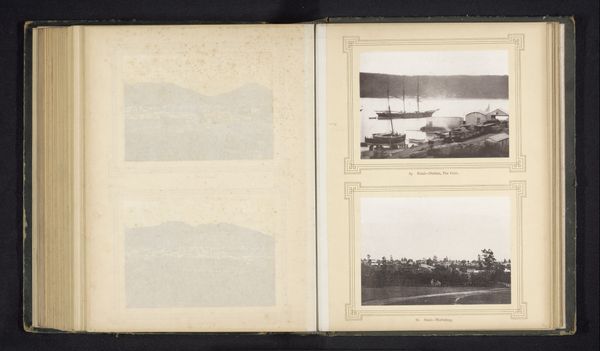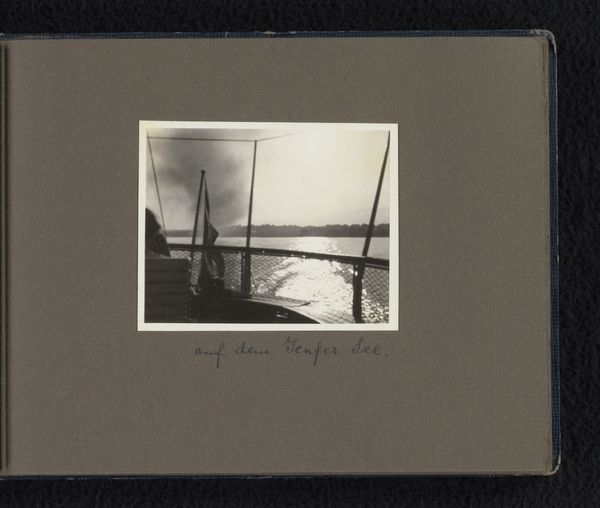
photography, gelatin-silver-print
#
dutch-golden-age
#
landscape
#
photography
#
gelatin-silver-print
#
realism
Dimensions: height 236 mm, width 310 mm
Copyright: Rijks Museum: Open Domain
Curator: Here we have Herman Besselaar’s “Twee gezichten op een windmolen en een detail van een kade," or “Two views of a windmill and a detail of a quay," made in 1933. It’s a gelatin silver print mounted in a photo album page. Editor: My first impression is a certain melancholy. The monochromatic images, the windmill—it speaks of a slower, perhaps simpler, time. And there’s a rawness, a grit in the depiction of materials. Curator: Windmills often symbolize ingenuity, industry, and prosperity, of course, and in a specifically Dutch context they evoke a strong sense of national identity and the long tradition of land reclamation. Besselaar offers a visual representation of Dutch cultural heritage. Editor: But what interests me more is the printing process itself. Gelatin silver prints, widely used in the early 20th century, rely on a delicate balance of chemical reactions on paper. The textures, the subtle gradations of gray - that all comes from skilled manipulation in the darkroom, shaping light into being. Curator: True, but look closer: the angles, the composition…these choices point to a conscious artistic intention beyond merely documenting reality. See how the artist juxtaposes close-up with distant views. This calls attention to different aspects of Dutch scenery: from the detail to the panoramic. Editor: And what about the album page itself? That acts as another frame, placing these photographs within a context of memory-keeping. The mounting corners and the order of the photographs within the page contribute to how we interpret this scene. Curator: I'd suggest we're meant to consider the symbolic potency of such a landscape—an idealized vision presented to the viewer as not merely place but cultural statement. What does that ideal omit or overshadow? Editor: What it overshadows are the material realities behind that ideal: the labor involved in building the mills, the industry required to process silver into a photograph. It takes tangible work to even envision, materialize and eventually consume that idealization. Curator: Well, it is compelling how both photographic details and its material assembly allow to address the past with so much reflective strength. Editor: Indeed. Thinking about how photographs as artifacts shape both meaning and matter provides deeper awareness.
Comments
No comments
Be the first to comment and join the conversation on the ultimate creative platform.

